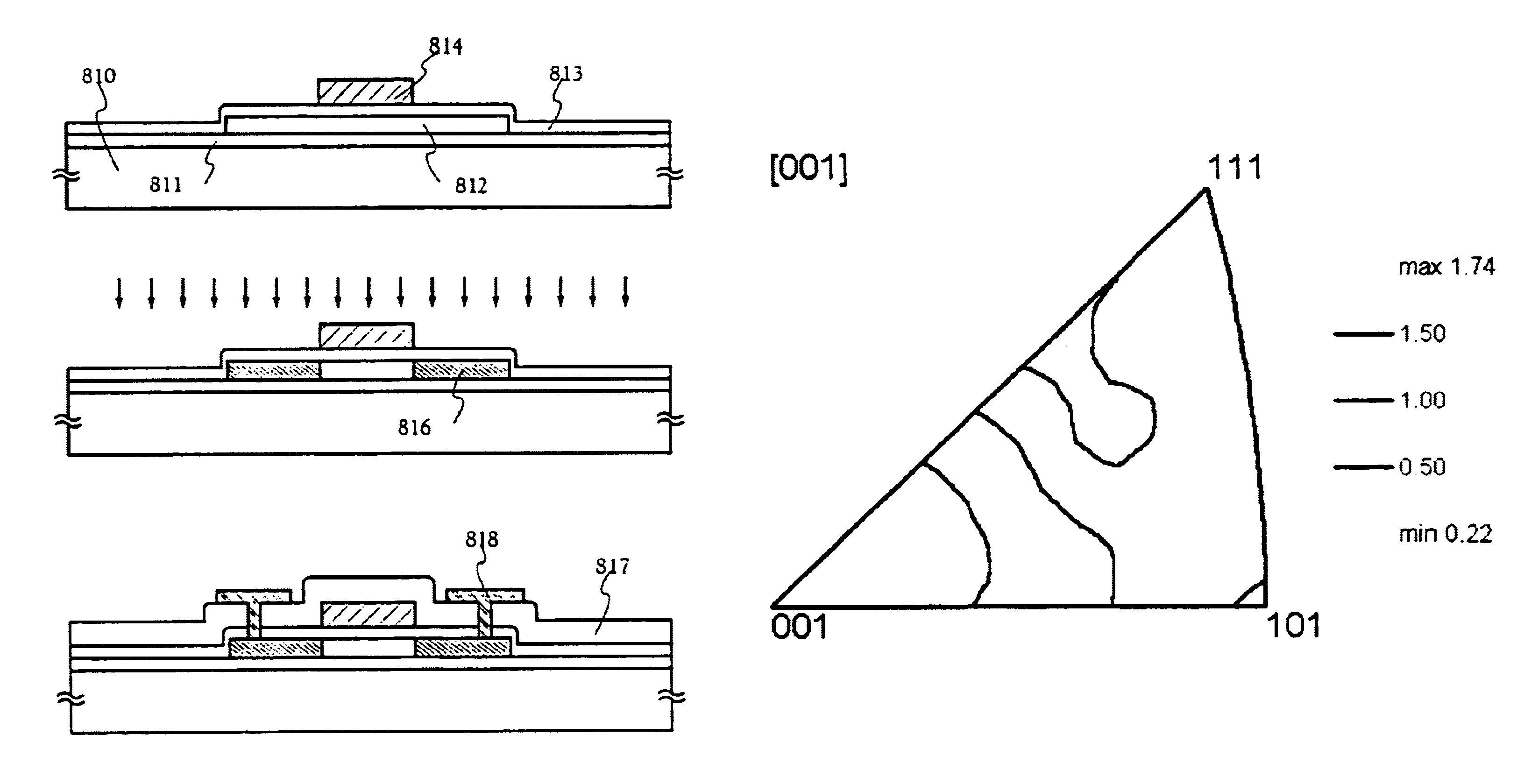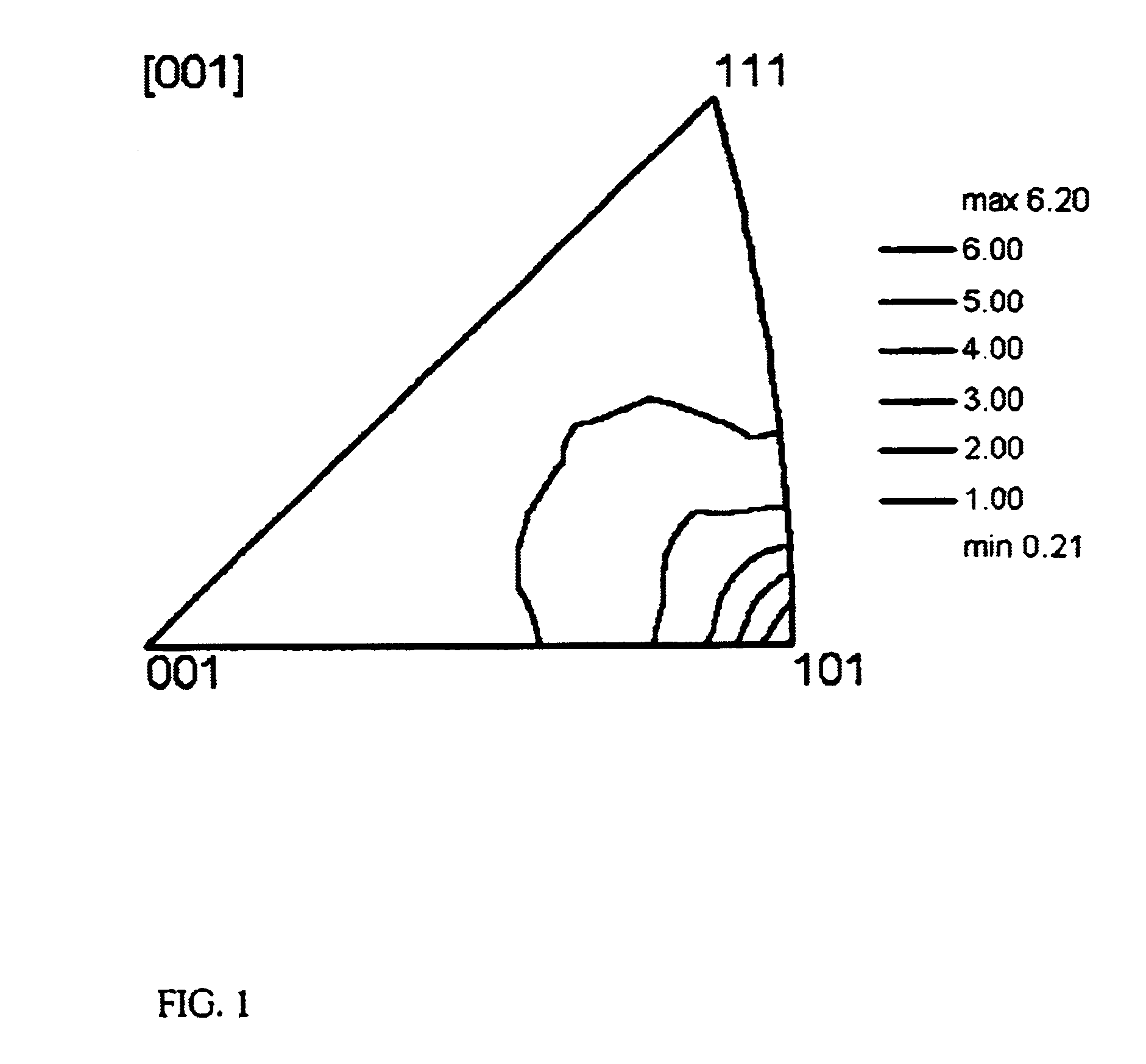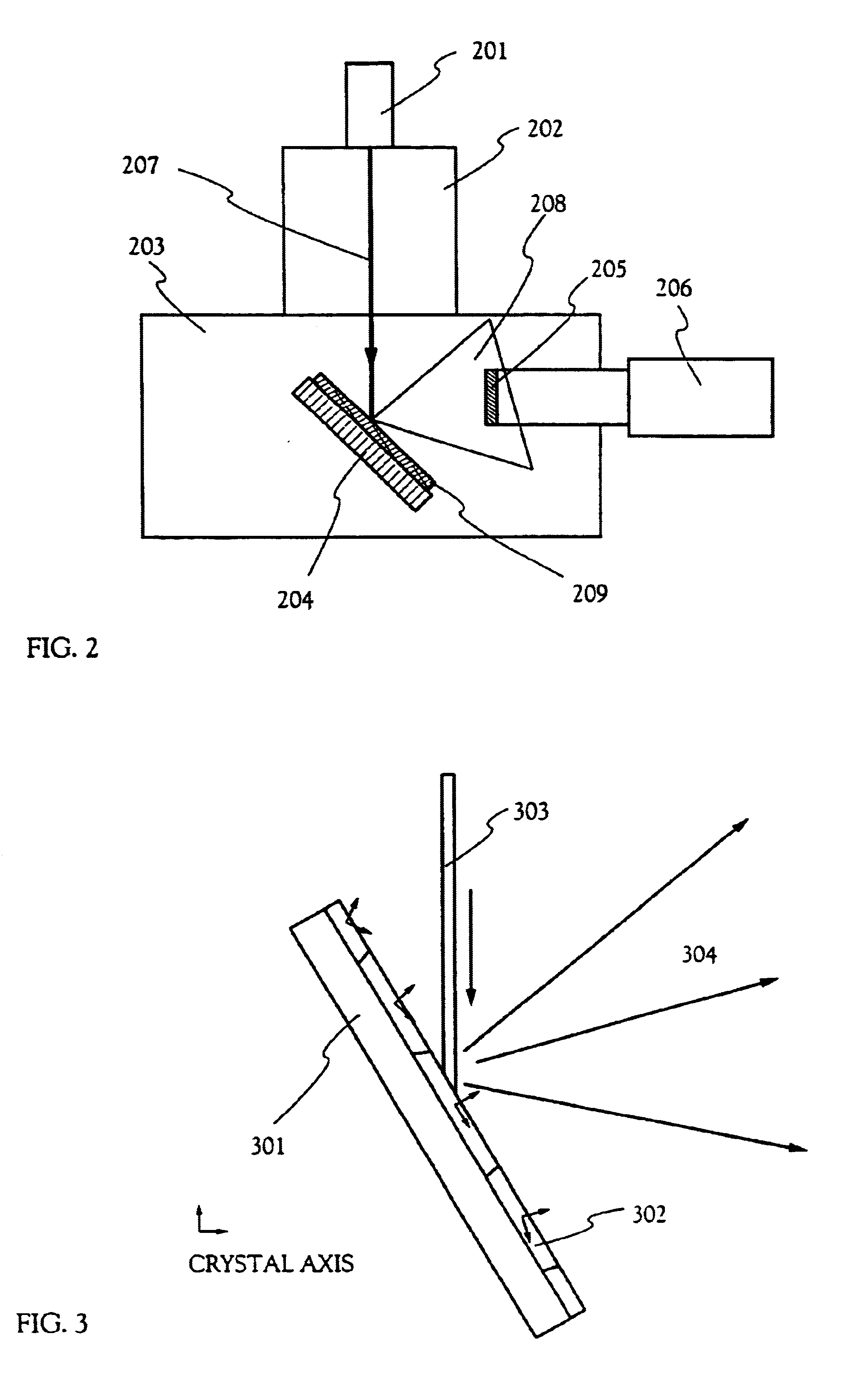Thin film transistors and semiconductor device
a technology of thin film transistors and semiconductor devices, applied in semiconductor devices, semiconductor/solid-state device details, electrical apparatus, etc., can solve the problems of difficult to obtain temperature and treatment time are not necessarily suitable, and achieve the effect of achieving homogeneous crystals over a wide area
- Summary
- Abstract
- Description
- Claims
- Application Information
AI Technical Summary
Benefits of technology
Problems solved by technology
Method used
Image
Examples
embodiment 1
[Embodiment 1]
The method of forming the crystalline semiconductor film described with reference to FIGS. 7A-7D are the one that executes the crystallization by adding a metal element into the whole surface of the amorphous silicon film containing germanium to assist the crystallization of silicon. Referring to FIG. 7A, first, the glass substrate 701 is the one represented by the # 1773 glass substrate of Coning Co. On the surface of the substrate 701, there is formed, as a blocking layer 702, a silicon nitride oxide film by using SiH.sub.4 and N.sub.2 O by the plasma CVD method maintaining a thickness of 100 nm. The blocking layer 702 is formed so that alkali metals contained in the glass substrate will not diffuse into the semiconductor film formed thereon.
The amorphous silicon film 703 containing germanium is formed by the plasma CVD method, and is deposited on the substrate 701 by the glow-discharge decomposition while introducing the GeH.sub.4 gas diluted into 10% with SiH.sub.4...
embodiment 2
[Embodiment 2]
Germanium can be added to the amorphous silicon film not only by the method of forming the film by using gases containing elements as represented by SiH.sub.4 and GeH.sub.4 by the plasma CVD method but also by a method of adding germanium by the ion injection method or the ion-doping method (or is also called plasma-doping method) after the amorphous silicon film has been formed. In the plasma CVD method, GeH.sub.4 is preferentially decomposed with the same high-frequency electric power due to a difference in the dissociation energy between SiH.sub.4 and GeH.sub.4. In this case, unless the film-forming conditions are precisely controlled such as employing pulse discharge, a cluster of germanium is formed in the amorphous silicon film making it difficult to uniformly disperse germanium.
FIGS. 8A and 8B are diagrams illustrating the steps of adding germanium by the ion injection method or the ion-doping method. In FIG. 8A, a blocking layer 702 is formed on a glass substra...
embodiment 3
[Embodiment 3]
Described below with reference to FIGS. 9A-9C is a method of selectively forming the metal element that assists the crystallization of the amorphous semiconductor film. In FIG. 9A, a substrate 720 is the above-mentioned glass substrate or the quartz substrate. When the glass substrate is used, a blocking layer is formed in the same manner as in Embodiment 1.
An amorphous silicon film 721 containing germanium may be formed by the plasma CVD method like in Embodiment 1, or germanium may be introduced by the ion-injection method or by the ion-doping method as in Embodiment 2. It is also allowable to employ a method of formation by decomposing Si.sub.2 H.sub.6 and GeH.sub.4 at a temperature of 450 to 500.degree. C. by the low pressure CVD method.
Then, a silicon oxide film 722 is formed maintaining a thickness of 150 nm on the amorphous silicon film 721 containing germanium. Though there is no particular limitation on the method of forming the silicon oxide film, the silicon...
PUM
| Property | Measurement | Unit |
|---|---|---|
| thickness | aaaaa | aaaaa |
| temperature | aaaaa | aaaaa |
| thickness | aaaaa | aaaaa |
Abstract
Description
Claims
Application Information
 Login to View More
Login to View More - R&D
- Intellectual Property
- Life Sciences
- Materials
- Tech Scout
- Unparalleled Data Quality
- Higher Quality Content
- 60% Fewer Hallucinations
Browse by: Latest US Patents, China's latest patents, Technical Efficacy Thesaurus, Application Domain, Technology Topic, Popular Technical Reports.
© 2025 PatSnap. All rights reserved.Legal|Privacy policy|Modern Slavery Act Transparency Statement|Sitemap|About US| Contact US: help@patsnap.com



